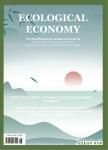Scenario analysis of low carbon development in Tianjin, China
Scenario analysis of low carbon development in Tianjin, China作者机构:Institute of Energy Environment and Economy Tsinghua Universty Beijing 100084P.R.China Institute of Low Carbon Economy Tsinghua University Beijing 100084 P. R. China School of Economy and Management Tianjin University of Science and Technology Tianjin 300222P.R.China Tianjin Municipal Committee of Development and ReformTianjin 300040P.R.China
出 版 物:《Ecological Economy》 (生态经济(英文版))
年 卷 期:2010年第6卷第1期
页 面:2-20页
学科分类:08[工学] 080502[工学-材料学] 0805[工学-材料科学与工程(可授工学、理学学位)]
主 题:Scenario analysis Low-carbon development Carbon productivity,Tianjin
摘 要:Low-carbon economic development has become *** approach to coordinating economic development and carbon emissions mitigation. As rapid developing economic, aviation and navigation, and financial center of North China. Tianjin's energy demand and CO2 emissions are mushrooming, with per capita CO2 emission from fossil fuel combustion exceeding 20 t in 2020, which much exceeds current level of USA. In the background of global responding to climate change, China will likely be requested to commit peaking its GHG emissions during 2020-2030, which will inevitable reduce the room of development in Tianjin enormously. Tianjin should make deployment ahead, realizing win-win of addressing climate change and sustainable development, with low-carbon economic development as important strategic mission. First of all, Tianjin should devote more efforts to reducing energy intensity and realizing relative emission reduction. Scenario analysis shows that Tianjin's future CO2 emissions will continue to increase rapidly, but they can be significantly reduced by taking measures. Second, Tianjin should get ready for achieving absolute reduction of CO2 emissions as soon as possible, preparing system, technology and talent in advance, making great efforts to establish institutional meehanisms conducive to low-carbon development from now on. starting from energy conservation and emission reduction, actively carrying out low-carbon technology research and development, vigorously developing the tertiary industry with low emissions, developing new and renewable energy resources, actively promote low-carbon consumption.



